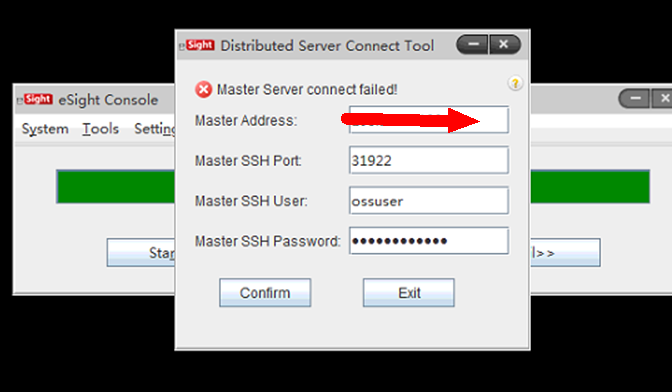One of the most annoying issues many small businesses face are the network problems. The most annoying thing about network issues is that they’re almost always a vague problem without any always very hard to deal with. Now, the main reason behind it is that network issues are a vague problem. You can see that they’re there, but you don’t know what’s causing them.
That is why it is very important for businesses to have a networking expert or an IT department on-premises. Otherwise, you’re going to be stuck with a bunch of disgruntled employees and slow internet and you’re never going to get anything done in time. Now, network administrators usually have to do wonders to identify the problem.
Troubleshooting the slowdowns is a lot harder than it might initially seem. There are way too many things at play to just find the issue and deal with it, but that’s hardly the worst thing. The worst thing is the fact that it is rarely the network that is the cause of the slowdown – it’s the users. To prove it, you have to successfully troubleshoot the network.
To do so, you need some knowledge. If the Windows troubleshoot button was capable of identifying the issue – no one would need a network administrator. However, that’s not the case. So, as an admin, what do you do?
Table of Contents
Troubleshooting with NTA

The first step towards successfully troubleshooting the slowdown is to look at the data source. That is the easiest way for you to notice what’s happening on the business network and what’s eating up the bandwidth and causing the slowdown. The easiest way to do this is by using flow data analysis or packet capture technologies and software.
If you want the most detailed assessment, you should probably turn to packet capture technology, but that does take some setting up in the first place which is not always easiest to do. This process is what is called an NTA or network traffic analysis. This is the method of monitoring the activity and availability on the network in order to locate and identify potential security or operational issues, including troubleshooting the slowdowns.
Next up, you’ll need a network traffic monitoring tool. NTM tools are quite useful when it comes to monitoring real-time data usage, which is, if you remember the part where we said that the user’s mostly at fault for slowdowns, very important in these situations. To successfully troubleshoot the slowdown, you need to see what’s going on at the moment. Real-time info should give you a clear insight into what’s different now, compared to when the network was working flawlessly.
TCP/UDP Ratio

Another thing to look out for, according to consoleconnect, is the ratio of TCP to UDP traffic. In normal conditions, your network should sport over 80% TCP traffic. On the other hand, if you notice an increase in UDP protocols, meaning they’re the ones devouring your bandwidth, there could be an underlying issue.
Check by comparing the numbers from the previous day, or the last known day when things were running smoothly. That’s usually the day before, otherwise, you would have already heard complaints from the employees if it weren’t. An excessive amount of UDP traffic is almost always a sign of excessive mead streaming, but it could also point to a DDoS attack.
Check The Most Bandwidth-hungry Apps

The reason behind your slowdown could very well be a bandwidth-hungry application or a process. Small businesses often have various processes running simultaneously, especially during work hours. A bandwidth monitoring tool will help your business track network traffic and usage patterns, giving you valuable insights into which applications, users, or devices consume the most bandwidth.
That is why it’s important to spread out the processes that may not be as important as the ones needed for day-to-day operations. You don’t need a backup that runs every hour. That’s just going to clog your network, limiting your ability to do actual work. Therefore, check for those and if you notice any of them – schedule them for later.
Check For Additional Bandwidth-hungry Apps

Now, it’s not always the backup that is at fault. Like we’ve said in the beginning – it’s probably the user. In most small businesses, all machines are interconnected and every workstation is connected to the main program or a server.
The workspace is often optimized just enough for you to seamlessly exchange data between the workstation or to write or read data from the main server. However, what it is not optimized for are 8 news tabs and a music streaming platform. That may not seem like a lot of bandwidth, but when you factor in the number of employees – you can see how it could turn out to be an issue.
Check For Malware, Spyware and Viruses

These nasty infestations could easily be the root of all evil and the main cause of the slowdown you’re experiencing. Now, there are many antivirus and anti-malware tools on the market, both paid and free, and most of them do a decent job, but accidents happen. You could easily have an infestation on a single workstation and that could affect the whole business. Depending on the virus you might be dealing with, your problems could range from mild to Earth-shattering and a slow network is definitely on the mild side of the spectrum.
Lack Of Bandwidth

Now, in some instances, you end up with a clean bill of health, so to speak, but you still experience slowdowns. What do you do in those situations? Well, if that’s the case, you’re most likely suffering from a lack of bandwidth. Sometimes, you don’t need fancy troubleshooting software or employee Spotify restrictions. Sometimes, you just need more bandwidth.
This is rather easy to troubleshoot for. Just burden your network with your maximum workload and if it fails – you need some additional bands. As your business grows, you’re going to need a lot more than just 10/100 MBPS and if you don’t upgrade, you’re definitely going to experience issues.
Conclusion
Troubleshooting the slowdowns isn’t easy, as you can clearly see. There could be various reasons for it – anything from a DNS error to insufficient bandwidth. However, we hope we have managed to help at least a little bit by pointing you in the right direction and giving you a few tips on where to look and what to do.

